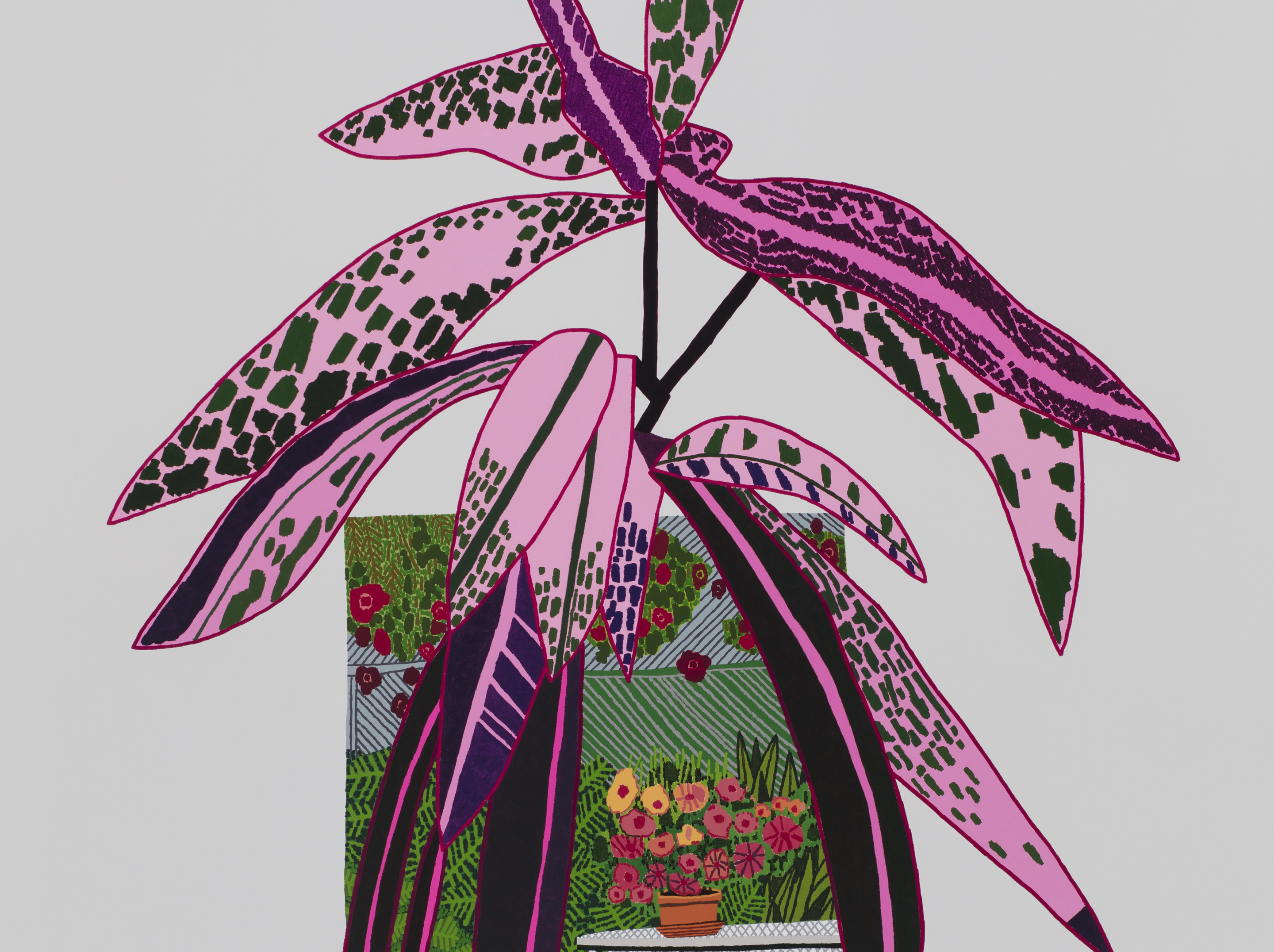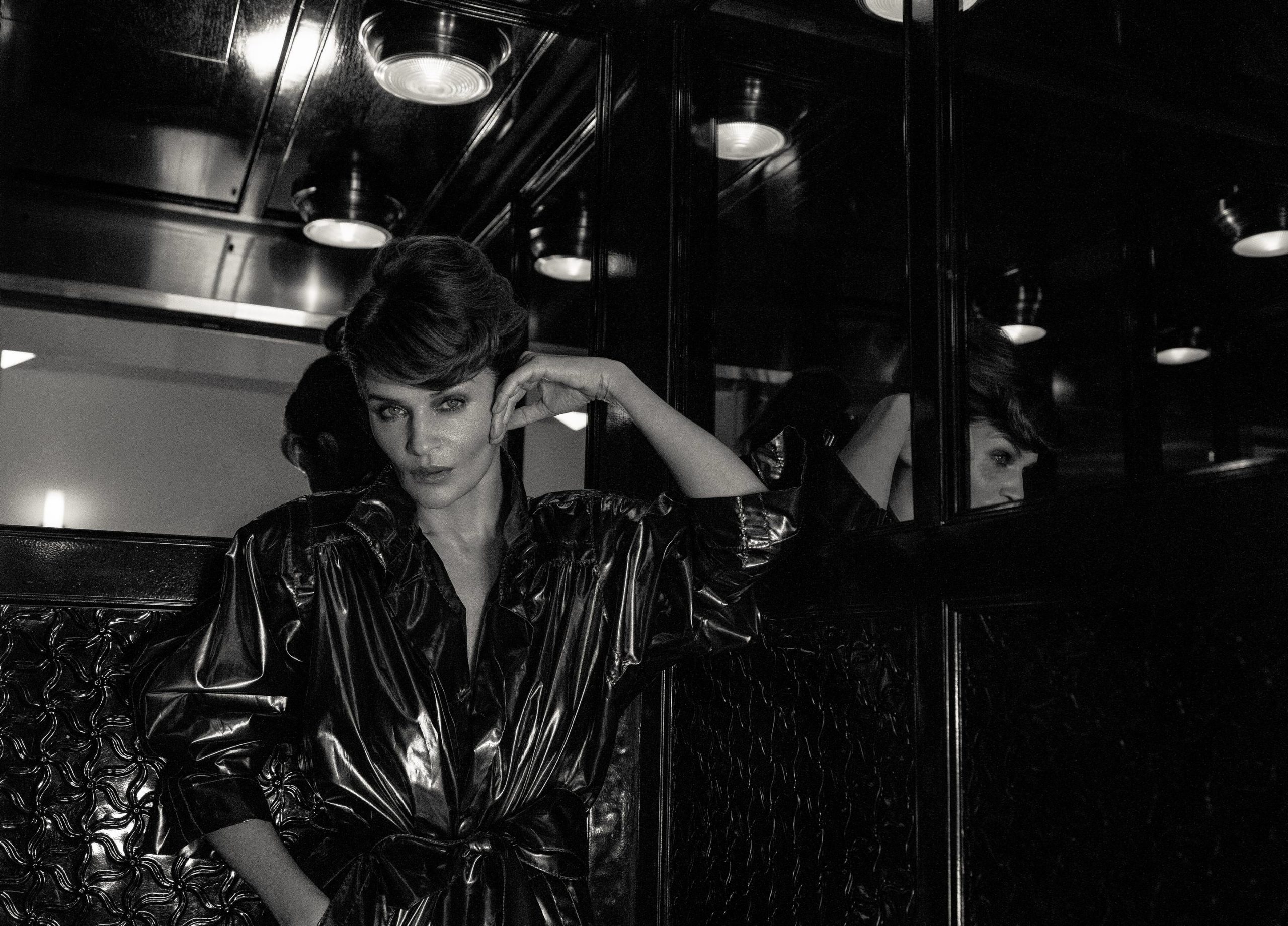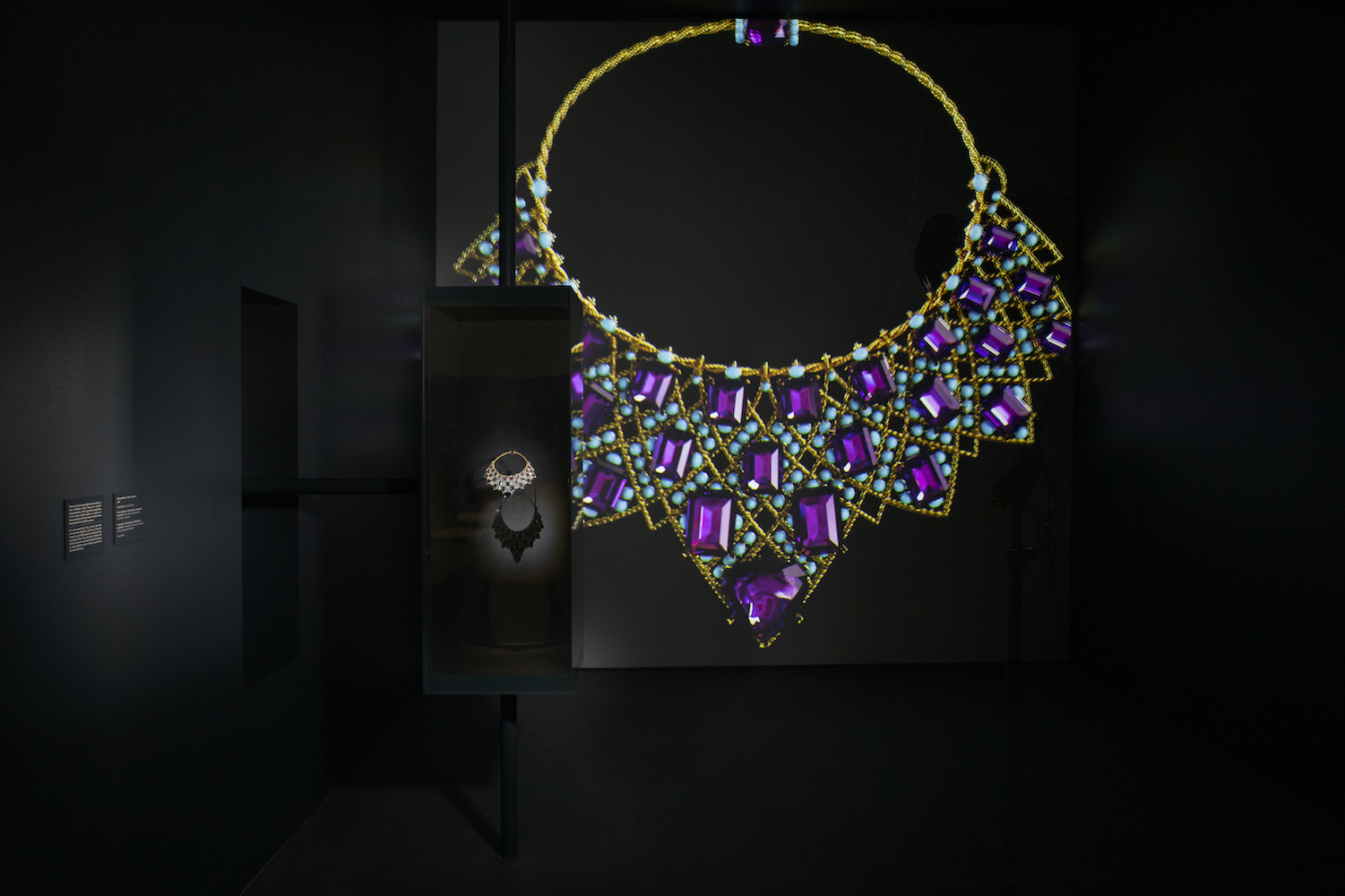This spring, Rebecca Warren’s outdoor sculpture Pas de Deux (Plaza Monument) (2016) debuted at the Dallas Museum of Art. To coincide with the special commission, “Rebecca Warren: The Main Feeling,” a 10-year look at the artist’s work, opened last month at the museum, curated by Gavin Delahunty. The exhibition contextualizes the artist’s use of clay, bronze, steel, neon, Polystyrene, and Perspex in sculptures that depict the female figure in exaggerated forms that have become increasingly abstract. Whitewall spoke with Warren about her practice, her points of reference that range from Helmut Newton to Robert Crumb, and the subversive humor in her work.
WHITEWALL: When and why did you decide that sculpture would be your form of art making, and women your subject of predilection?
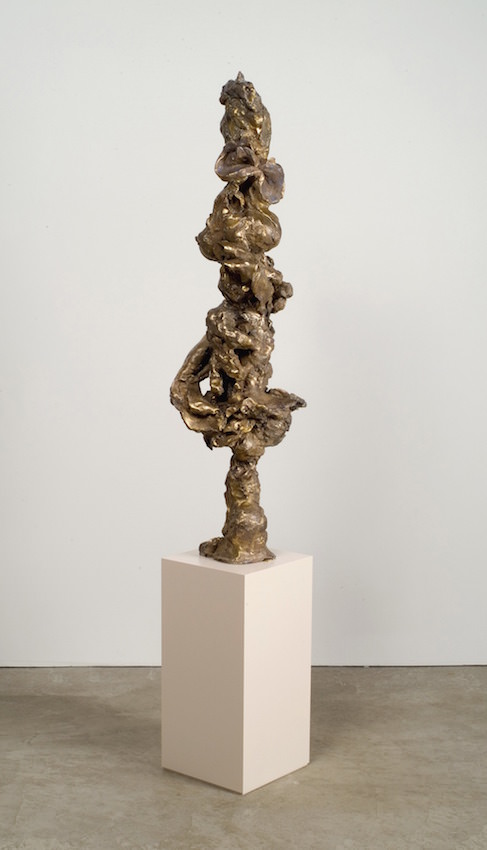
The Hills 5
2010
REBECCA WARREN: I have a fascination for the power and potency of objects. I’m drawn to the elemental in art. I suppose the transformation from a soft, malleable material to a shaped and meaningful thing is also fascinating to me. This idea—if that’s what it is—developed over my time as a student and gained full steam in the early ‘90s when I was starting out as a known artist.
The women in my sculptures began to take form because of my interest for the work of photographer Helmut Newton and cartoonist Robert Crumb. The reductions of function to form, the arcs and swellings, outlines, undulating surfaces—all intensely interesting to look at, and funny.
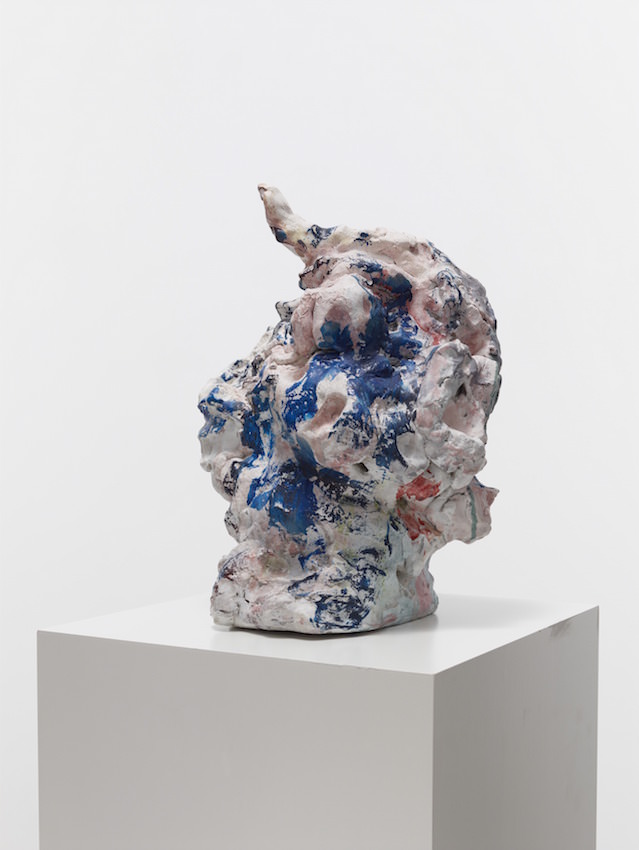
Hand-painted reinforced clay on painted MDF pedestal
Overall: 15 3/8 x 11 3/4 x 10 1/4 inches
Courtesy Maureen Paley, © Rebecca Warren
I have subsequently made many works that can’t conceivably be called “women.” Husbands, for example!
WW: You reference in your work classical male masters, notably Degas, Giacometti, and Rodin. How do you canalize these references as a female artist depicting women?
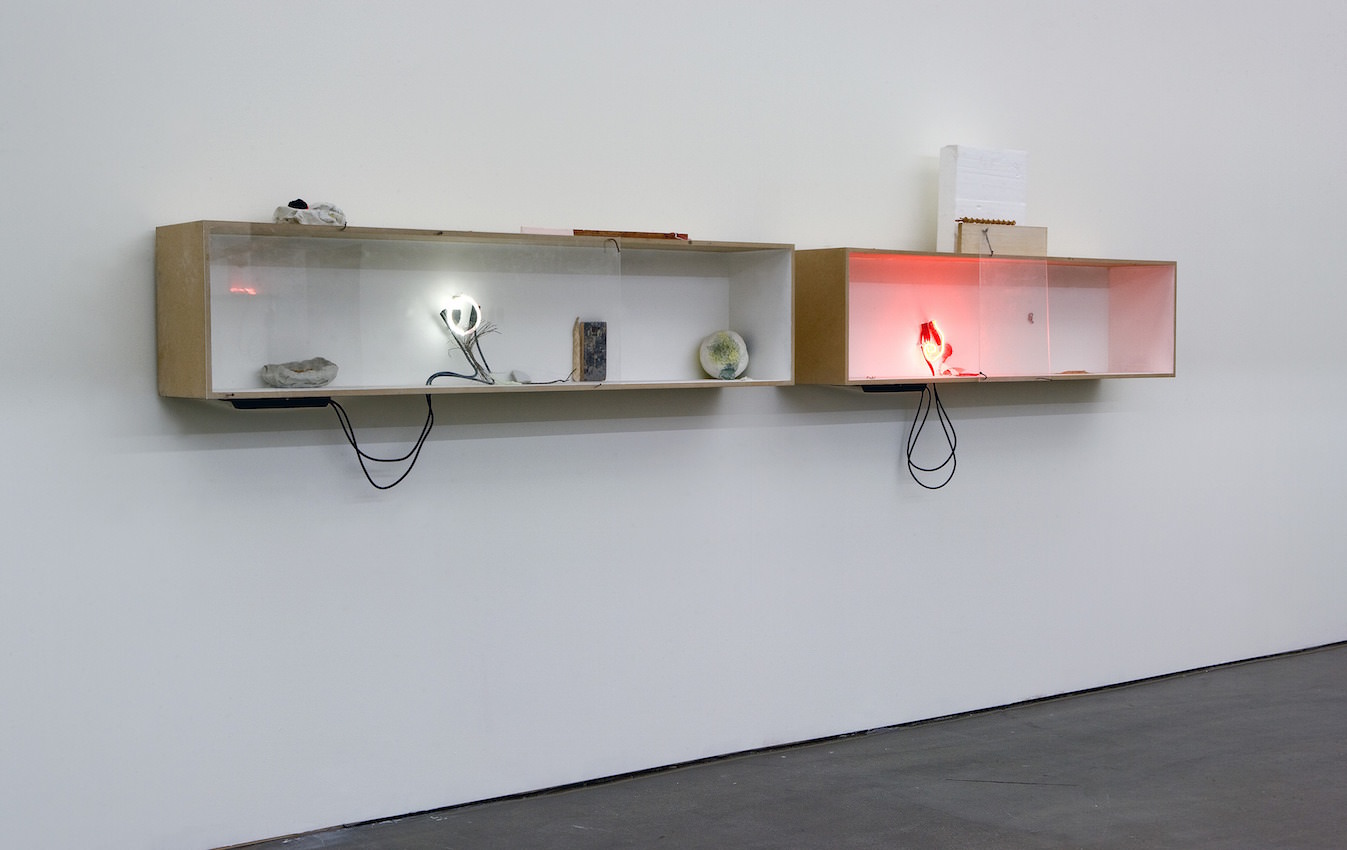
Photo: Tom Van Eynde
RW: The references, such as they might be, occur in the shapes of the sculptures themselves. Because of this, I think that the canalizing is done as soon as it has begun. As well as intake, influence, lifting, and placing in new contexts, there are other sorts of swaps going on. I kind of inhabit the character that makes the art, and this can complicate the sources of my work. In this sense, my wish has always been to operate and to be accepted as an artist. I don’t necessarily use my gender as a primary role.
WW: You have shifted from soft clay to harder steel and bronze over the years. What directs your choice of medium when starting a piece?
RW: I had an interest in crumbly fragility in the early clay sculptures. Over time, I’ve subsequently developed an interest in other values like permanence, longevity, and hardiness, for instance. But they can all run parallel to each other. Often I choose a material for a very broad function, like resilience to weather or as a ground for paint. You’re going with what feels right, or at least what doesn’t feel wrong. Every now and then I realize I’m making something in the wrong material, so I change it.
WW: You have also shifted from figuration to abstraction. Can you explain what drew you to that transition?
RW: There’s a range between these two categories along which my work has moved up and down. Sometimes the abstractions are human shapes, or seem so to me. What interests me in this range is indeed the potential for one thing standing for another, or reminding you of something, somewhere, or inhabiting its own peculiar universe of strange function and odd form.
WW: You are an artist, a painting and sculpture professor at the Kunstakademie of Düsseldorf, and a residential advisor at London’s Royal Academy of Arts. How do you combine and manage the academic sphere with the creative sphere in your career?
RW: By doing it all in useful proportions. It’s good to be associated with these sorts of institutions, to be recognized, included, and also to exercise some small influence here and there. It’s important not to lose touch with the direct teaching potential of your art. Working with students reminds you of the grinding process that necessarily accompanies any achievement in art, and being able to talk this kind of thing through with students is an important privilege—and brings me back to the realities of my own processes.




